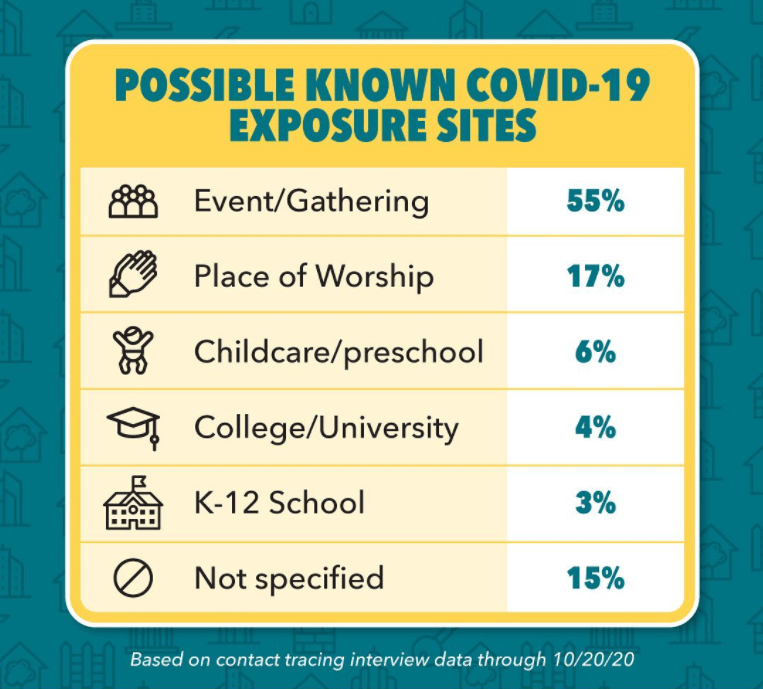While most people didn’t know how they got infected, a large percentage of Los Angeles County residents with COVID-19 who did identify a social setting as an exposure site listed events or places of worship as places where they could have contracted the virus, officials said.
As part of the contact tracing program, health officials spoke to 13,278 L.A. County residents who tested positive for the coronavirus during a three-week period between Sept. 24 and Oct. 14.
Of those who listed a possible exposure site, 55% said they had attended an event or gathering where two or more people became sick and 17% said they attended a place of worship where people became sick, according to the L.A. County Department of Public Health. Officials didn’t specify the type of gatherings, or whether they were indoors or outdoors.

Another 6% said they might have contracted the virus at child care center or preschool, 4% at college or university and 3% at school.
About 15% had a known virus exposure site but didn’t specify a location.
The vast majority of people who tested positive had identified a close contact as someone in their household, county Health Director Barbara Ferrer said in a Monday news conference.
Over 3,000 people with the virus had spent time at a retail setting like a grocery store, more than 1,400 visited outdoor spaces, more than 600 people visited restaurants and more than 500 people had been in offices.
Since only 65% to 70% of people with the virus in L.A. County did complete interviews with tracers, those who responded do not represent everyone who tested positive in that three-week period.
“Almost one third of the interviews are not completed primarily because people do not return calls and or refuse to provide requested information,” the department said.
Officials urged residents who test positive for the virus to provide information to contact tracers in order to minimize outbreaks in the county.
The virus remains widespread in L.A. County, keeping it in the most restrictive of the state’s four reopening tiers.
Gatherings of up to three stable households are allowed, but only outdoors and with physical distancing and face coverings.
“I think where we’re still struggling is around gatherings,” Ferrer said. “I think there’s still people who don’t feel like they need to take precautions for themselves. I think there are people who still don’t understand most of the precautions you’re taking are for other people, and for the sake of other people. I also think there’s a false sense of security we have when we’re with people we know.”





















